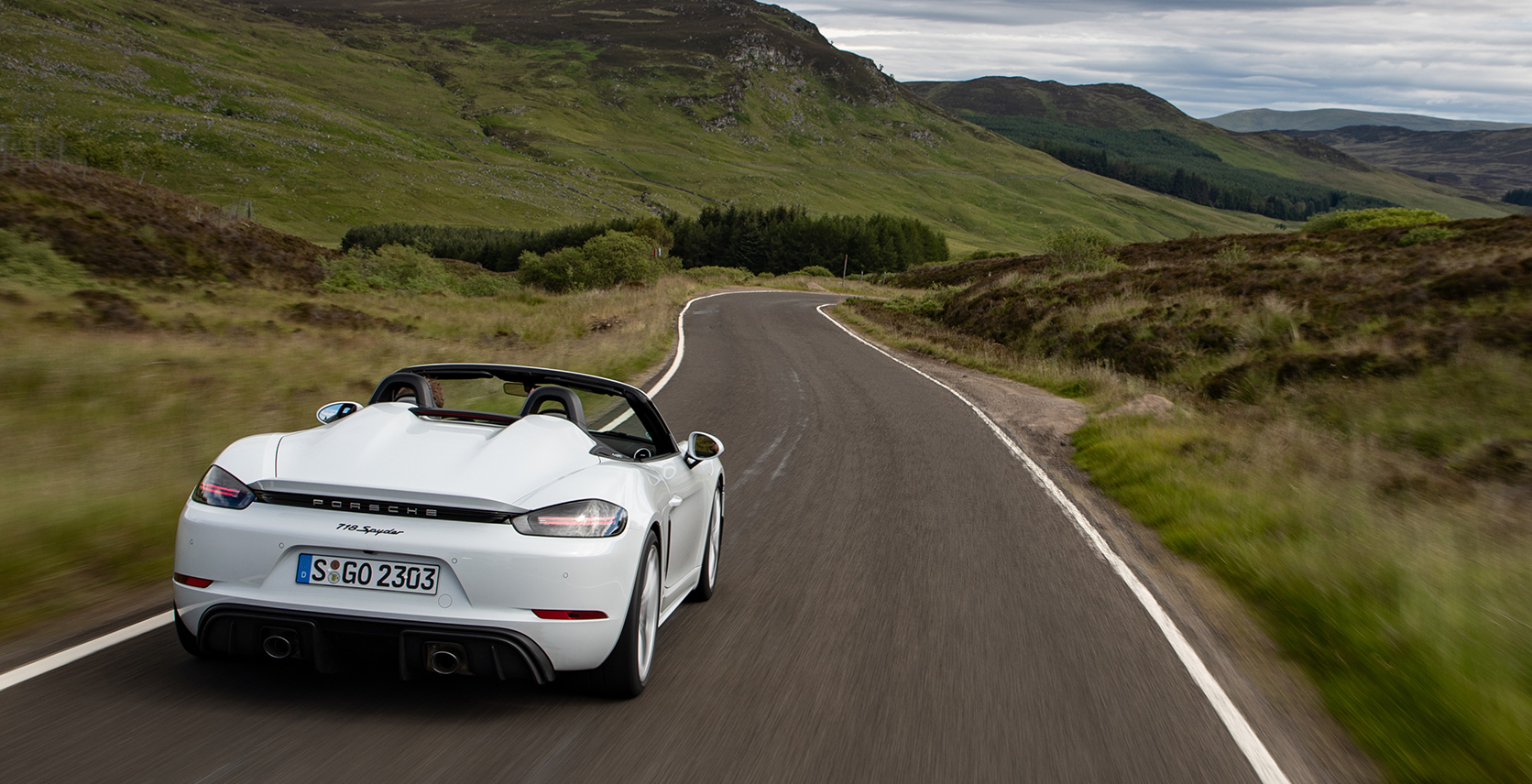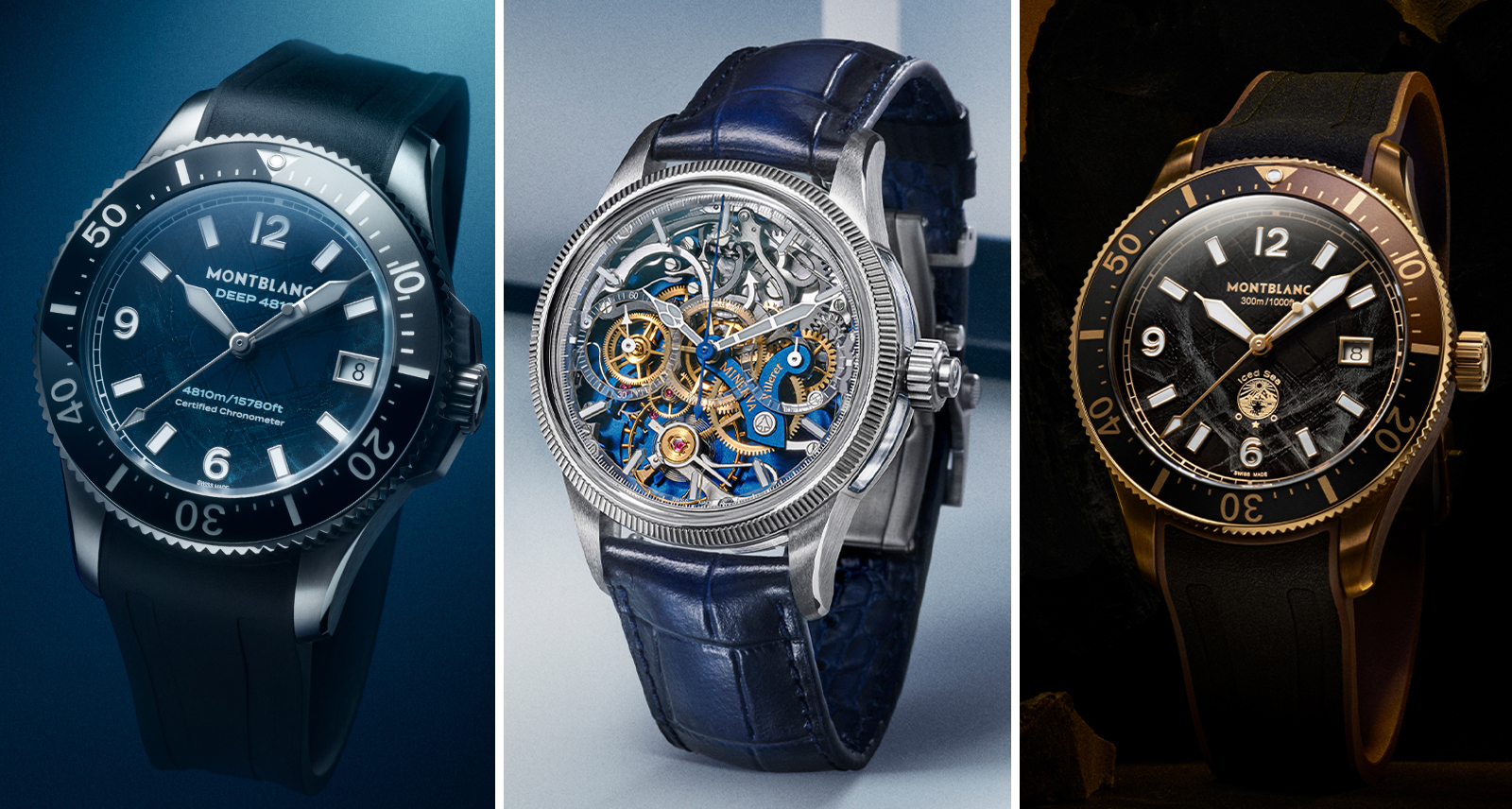How the New Porsche 718 Spyder Outpaces Its Own Myth
Scotland is home to more than its fair share of mythical creatures. The people here tell tales of Changelings, fairies who steal babies, and Selkies, seals who shed their skin to become human. The latter are not to be confused with Kelpies, who can appear both as a horse or sometimes as a sea creature that drowns sailors and sinks ships. And, of course, there’s the famous sea monster that lives in Loch Ness.
Spend any time in the Scottish countryside and you too might start to believe in mythical creatures. The place just looks ancient. The bedrock, which is often exposed by erosion, is some of the oldest on Earth, forged some three billion ago. The sky is frequently dark and menacing. Green hills are dotted with stone shacks that were built long before you or I were born and that will stand long after we are dead. If monsters live anywhere, it’s probably here.
There’s something primordial about Porsche’s new open-top Spyder too, and it’s not just the Scottish landscape we’re driving it through. It has to do with the wind swirling around the cabin and the hard, minor-key mechanical whine of the engine. It’s the diminutive size of the car, which feels from the driver’s seat like a go-kart with room for a plus one. Out the front window the hood drops away and all you see are the two arches over the front wheels, not unlike the view from Steve McQueen’s Porsche 917 racecar in Le Mans. Most of all, the Spyder’s primordial nature comes from its purity as a machine, almost as if it was untouched by time and the march of modern technology.
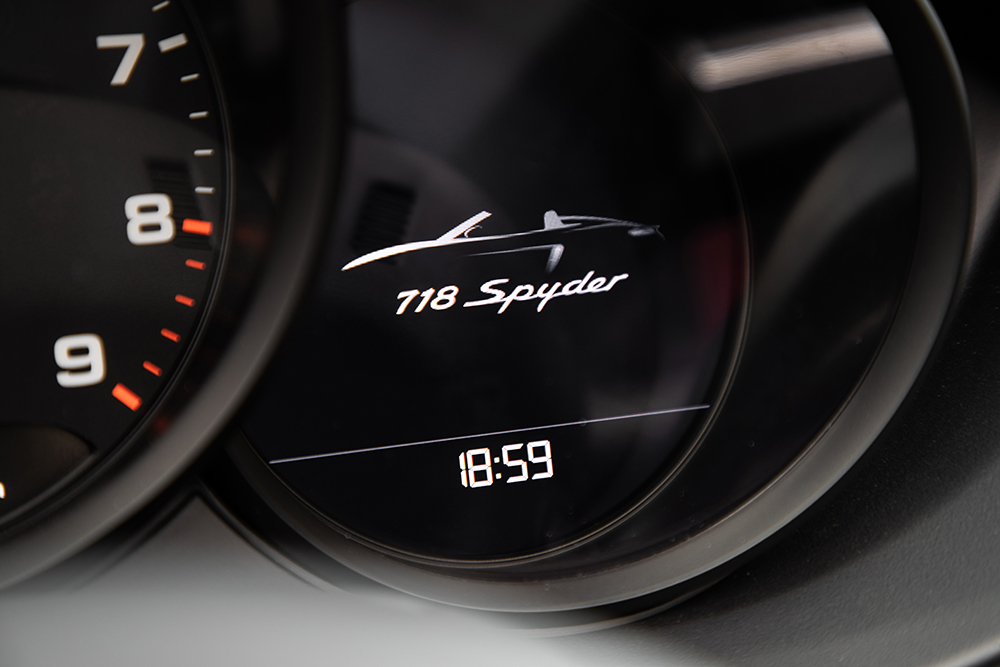
It’s a remarkable illusion Porsche has been able to pull off because, of course, the all-new 2020-model-year 718 Spyder takes full advantage of every modern technology. It has sat-nav and airbags and a backup camera. Its engineers made use of finite element analysis and computational fluid dynamics and every other cutting-edge digital tool at their disposal. And yet, the car feels totally analog: precise, mechanical and intuitive.
A day in the Spyder is a full mind-body experience, better than any Spa day.
The Spyder is the ultimate version of Porsche’s mid-engine 718. Unlike the regular 718 which has a four-cylinder turbo, the Spyder is powered by an entirely different, non-turbocharged flat-six engine that’s shared only with the racetrack-ready 718 GT4. In fact, the Spyder shares just about everything with the GT4 — except for the latter’s conspicuous rear wing and fixed roof. Both cars have reworked suspension, stiffened with extra bracing and fitted with precision rose-joints where once there were rubber bushings. None of Porsche’s previous mid-engine Spyders have been this hardcore.
To get the most out of such a pure machine, you’ll want to disconnect Bluetooth, turn off the stereo, and give the car your undivided attention. It’s one of those rare machines with depth; the more you put in, the more it rewards.
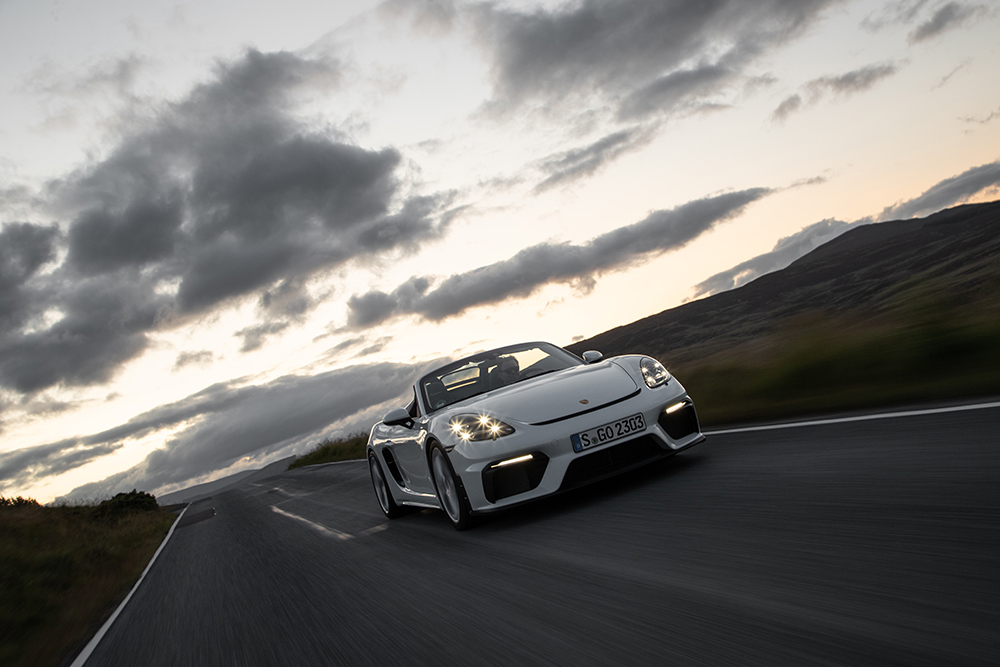
Notch the stubby six-speed gear lever into first and let out the light clutch pedal. Note the fine-grain texture of its feedback that tells you exactly how much the clutch is biting. A great manual transmission is a rare experience these days, and worth savouring. (The stick shift is the only option for now; although an automatic will come eventually, we heartily recommend the manual.)
Flex your ankle on the throttle and the revs rise and fall in an instant. Unlike with a turbocharged motor, acceleration is intuitively linear, with speed building predictably instead of all at once in a big explosion of torque. This makes driving at or beyond the limit easier and more forging. You’ve got to work the gearbox, keeping the engine in the upper reaches of its rev range where the power is: 414 hp comes at 7,600 rpm and 309 lb-ft of torque is available from 5,000 – 6,800 rpm. The redline is an ear-splitting 8,000 rpm.
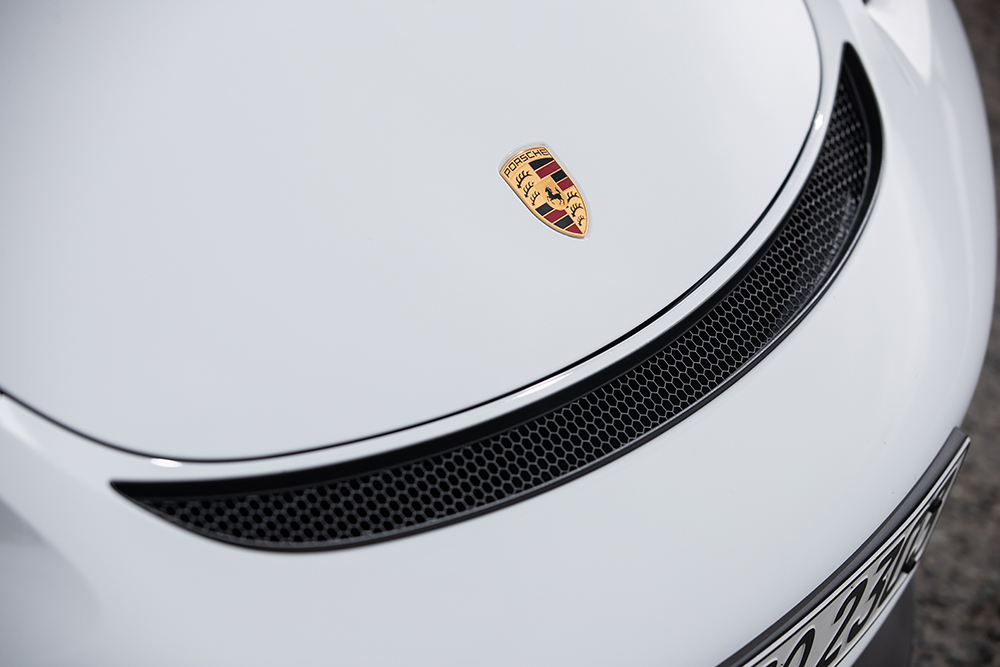
Driving over undulating countryside roads, the steering is in constant motion, brimming with feedback from the wheels. The car breaths with the road, rather than bludgeoning over it. The Spyder feels alive from the moment you set off. As far as handling goes, the car is like a blank canvas; it’s limited only by your creativity and talent. Any initial understeer can be instantly neutralized with throttle. The mid-engine layout means the car takes well to braking deep into corners. The attitude the chassis takes after the apex is entirely up to your right foot.
A day in the Spyder is a full mind-body experience, better than any Spa day. Look down at your watch after a quick drive and you’ll find the whole afternoon has disappeared. It’s such a transparent car that it makes you a better driver. In short, it behaves exactly as your childhood self imagined a sports car would.
The new 718 Spyder has an old soul, being the direct descendant of a long line of open-top Porsches, such as the 1969 Targa Florio-winning 908 Spyder, 909 Bergspyder, the 1959 718 RSK and the 550 RS Spyder. Drivers talk about those cars with the sort of reverence with which the Scots speak of Selkies, Changelings and the Loch Ness Monster. Although it’s no monster, our first impression of the new 718 Spyder would indicate Porsche’s latest sports car is destined for similarly mythic status.
